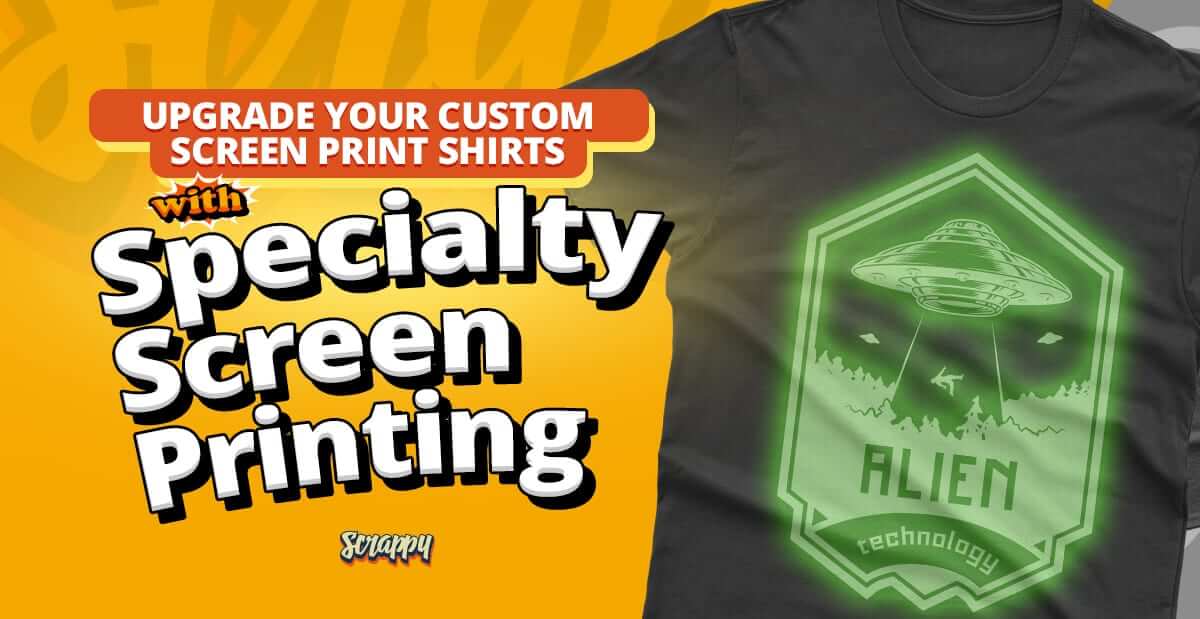Detailed Silk Screen Printing for Custom Art Apparel
Detailed Silk Screen Printing for Custom Art Apparel
Blog Article
Screen Printing Uncovered: Whatever You Need to Know Concerning Tee and Garment Printing Techniques
Display printing is a remarkable method that integrates art with method, offering limitless opportunities for creative thinking. Prepared to check out the necessary components that make screen publishing an art type?
The Essentials of Display Printing: Just How It Works
When you dive right into display printing, you'll find it's both a scientific research and an art. At its core, screen printing entails developing a pattern, or display, that allows ink to pass via only in certain locations.
Following, you'll mix your inks and prepare your printing surface. Position the display over the fabric, then use a squeegee to push ink via the screen onto the garment. This procedure needs precision, as you want clear, vivid prints. After printing, you'll heal the ink with heat, ensuring it abides by the textile and lasts via washes. Each step is crucial, and mastering them will raise your screen printing abilities, transforming simple garments right into distinct, expressive items.
Sorts Of Screen Printing Techniques
Once you comprehend the basics of screen printing, it's time to explore the various strategies that can raise your designs. One prominent method is conventional screen printing, where ink is pressed via a stenciled screen.
One more option is plastisol printing, recognized for its durability and dazzling colors, making it a favored for lots of brand names. Experiment with halftone printing to produce gradient impacts and intricate styles.
Necessary Equipment for Display Printing
To attain sensational results in display printing, having the best tools is fundamental. You'll require a tough screen printing frame, which holds the mesh that moves your design onto the garment. Next off, buy top notch mops; these are vital for using ink evenly across the display. You'll likewise call for an excellent exposure system to produce your displays, as well as a washout booth for cleansing them after use. A reputable heat source, like a conveyor dryer or warm press, is important for treating your prints to assure longevity. Do not forget an appropriate workspace, furnished with tables and storage for your supplies. Ultimately, safety gear, such as handwear covers and masks, will maintain you secure from chemicals and inks. With the right tools, you'll be well on your way to creating professional-quality prints.
Picking the Right Inks and Materials
When selecting inks and materials for screen printing, you require to take right into account the sort of ink that works finest for your job. Think of material compatibility to ensure your styles look fantastic and last long. Explore environment-friendly ink alternatives to make your printing process much more sustainable.
Kinds Of Display Inks
Selecting the appropriate display ink is crucial for accomplishing vibrant, sturdy prints that satisfy your task's needs. There are several kinds of screen inks to examine. Plastisol ink is popular for its convenience and ease of usage, supplying exceptional color opacity on dark textiles. Water-based ink, on the other hand, supplies a softer feel and is environment-friendly, making it suitable for those seeking to minimize their ecological influence. Discharge inks remove dye from the fabric, leading to a soft, classic appearance yet need specific handling. Lastly, specialized inks, such as glow-in-the-dark or metal, can add special results to your layouts. Assess your job needs and choose the ink that straightens finest with your desired outcome.

Fabric Compatibility Considerations
Recognizing material compatibility is essential for achieving top notch screen prints, especially because different products respond distinctively to various inks. When choosing inks, take into consideration the material type-- cotton, polyester, or blends. For cotton, water-based inks function well, providing gentleness and breathability. Polyester, on the other hand, often calls for plastisol inks for far better bond and vivid colors. You may need to use a mix of both kinds if you're publishing on blends. Constantly test your inks on example textile to guarantee they stick properly and keep shade integrity. In addition, remember that material weight and structure can affect the final result, so picking the best ink and product combo is important for your job's success.
Eco-Friendly Ink Options
Environment-friendly inks are becoming a prominent choice for display printers that wish to minimize their environmental influence while maintaining top quality. When selecting inks, think about water-based inks, which are less damaging and much easier to cleanse up compared to conventional solvents. These inks bond well with materials, supplying vibrant results without hazardous chemicals. You could likewise discover eco-solvent inks that make use of fewer unstable natural compounds (VOCs), making them a much safer option for both your health and wellness and the planet.
Additionally, seek inks made from renewable resources, such as soy or vegetable-based alternatives. By selecting the best inks and materials, you'll not just create magnificent designs but likewise add to an extra sustainable printing procedure. Make the button, and your prints will certainly mirror your commitment to the atmosphere!
Preparing Your Design for Screen Printing

Submit Style Demands
To ensure your layout looks vibrant and sharp on material, you'll need to pay close interest to file style demands for screen printing. Make sure your style has a transparent background to stop undesirable white sides on your prints. Maintain color modes in mind; CMYK is typical for display printing, so transform your RGB creates as necessary.
Shade Splitting Up Methods
Shade splitting up is a necessary step in preparing your style for display printing, and understanding it can considerably boost your print high quality. You'll require to damage your style right into private shades, as each color calls for a separate display during printing. This accuracy not only assures accurate shade representation however also simplifies the printing process.
Resolution and Dimension
Accomplishing the most effective cause screen printing begins with guaranteeing your layout has the best resolution and dimension. Preferably, your artwork should go to the very least 300 DPI (dots per inch) for sharp, clear prints. If you make use of lower resolution, your end product could look pixelated and unprofessional.
When it comes to size, consider the measurements of your print area. Design your artwork to match the last print size, preferably developing it in the real dimensions you'll be publishing. In this manner, you'll stay clear of any unforeseen scaling concerns.
Constantly check your layout in both vector and raster formats. Vector graphics can be scaled without losing high quality, making them perfect for display printing. Preparing appropriately will guarantee your style looks remarkable on every garment!
Step-by-Step Display Printing Refine
Display printing is a vibrant procedure that permits you to develop lively layouts on various surface areas. To obtain begun, you'll require a screen, solution, and your selected ink.
Put ink onto the screen and make use of a squeegee to push the ink with the stencil onto the material. Raise the display very carefully and let the print completely dry. You have actually successfully display published your layout.
Tips for Successful Screen Printing Projects
While you're diving into your screen printing jobs, keep in mind that prep work is key to success. Start by collecting all your products-- inks, screens, mops, and garments. A tidy work area helps stop undesirable errors, so tidy up before you start.
Next, validate your artwork is high-resolution and effectively sized for your garment. Examine your display for appropriate exposure and clean it completely to avoid spots. When blending your inks, follow the manufacturer's standards to achieve the ideal uniformity.
Throughout printing, apply also pressure with your squeegee for constant outcomes. Don't rush; take your time to validate each print meets your standards. After printing, allow your garments completely dry completely prior to taking care of or packaging them.
Lastly, constantly maintain an example of your click this link benefit future recommendation. By doing this, you can assess your development and improve your methods gradually. Satisfied printing!

Often Asked Inquiries
For how long Does It Require To Establish a Screen Printing Job?
Establishing up a display printing job usually takes you can find out more about thirty minutes to an hour. You'll prepare the screens, mix inks, and readjust journalism. The time differs based upon intricacy and experience, so stay organized!
Can I Publish on Different Textile Keys In Using the Very Same Strategy?
Yes, you can print on different material kinds making use of the exact same strategy, yet you'll require to readjust your setups and inks. Some materials soak up ink in different ways, so exploring assurances the most effective results for each material.
What Prevail Mistakes to Avoid in Screen Printing?
When display printing, prevent common blunders like using the incorrect ink, neglecting correct direct exposure times, or skipping pre-press checks. Always examine your arrangement and maintain clean screens to assure quality outcomes each time.
Exactly How Can I Properly Clean and Preserve My Screen Printing Equipment?
To properly tidy and preserve your screen printing tools, you should on a regular basis clean screens with appropriate solvents, examine squeegees for wear, and guarantee all devices are stored completely dry and dust-free. Consistency enhances and protects against pricey repair work efficiency.
Is Display Printing Eco Pleasant Compared to Various Other Techniques?
Display printing can be a lot more environmentally pleasant than other methods, specifically if you make use of water-based inks and eco-conscious products. By selecting sustainable materials and methods, you decrease waste and reduce your impact additional resources on the planet.
Display Printing Uncovered: Every Little Thing You Need to Know About Tee Shirt and Garment Printing Strategies
At its core, screen printing entails creating a pattern, or screen, that permits ink to pass with only in particular areas. Setting the screen over the textile, after that use a squeegee to push ink through the screen onto the garment. One popular method is traditional screen printing, where ink is pushed with a stenciled display.When selecting inks and products for screen printing, you need to take into account the kind of ink that functions best for your project.
Report this page